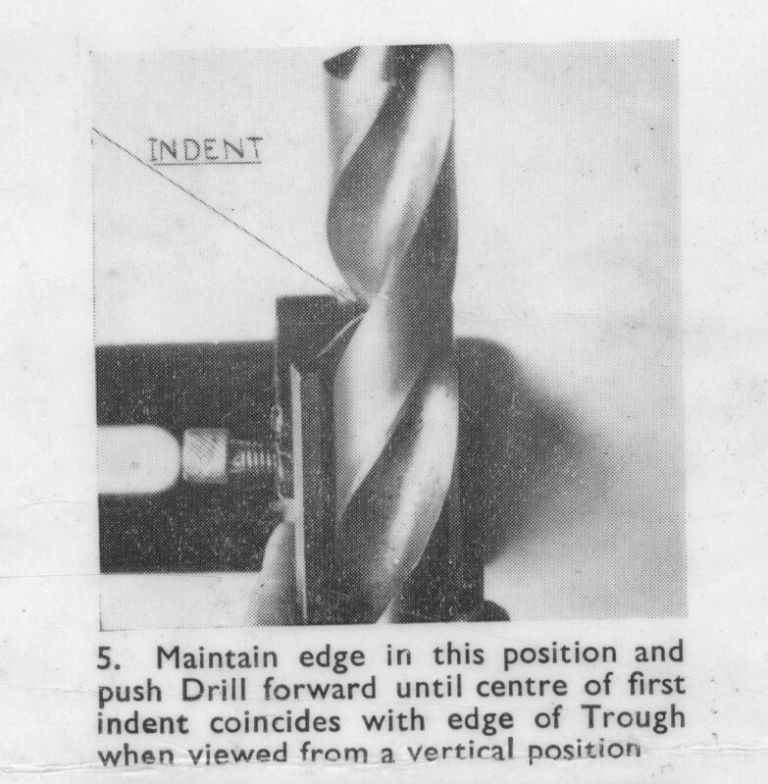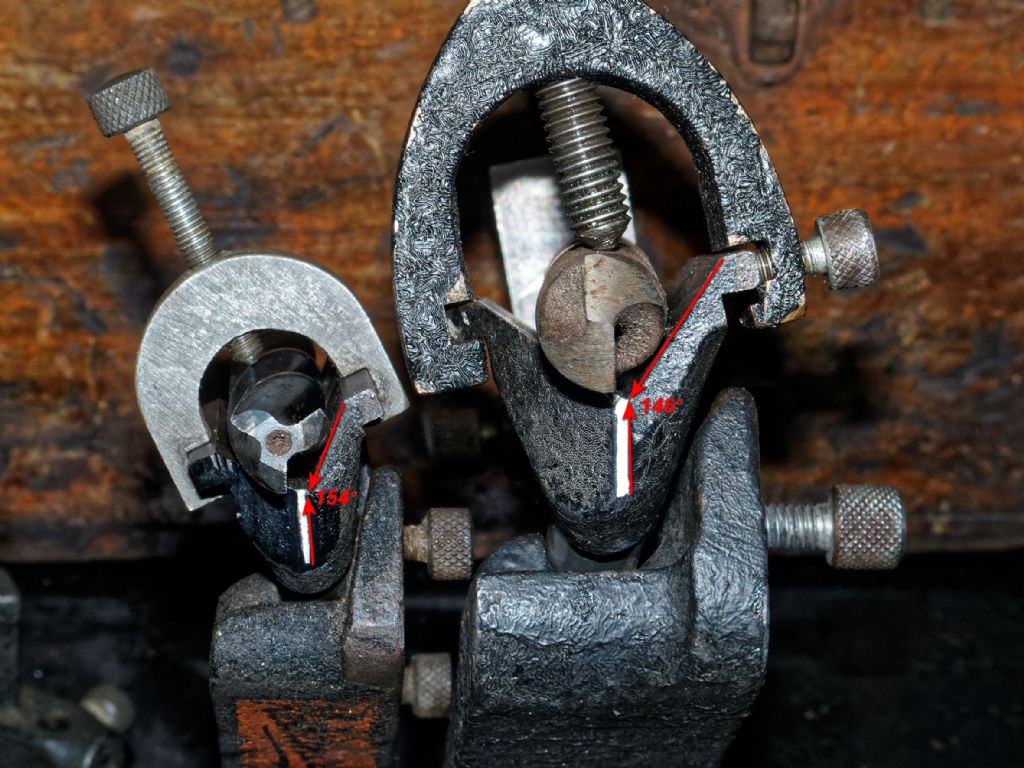Thank you for this thread! It sent me down the garden to collect my jig and study it in conjunction with these texts.
I have tried using it, and was on the right track but had not realised the subleties. Nor known part of it is missing – the end-stop.
It also seems rather uncertain on the pin that retains the rotating stem in the frame, so it is very easy to have a lot of wobble in the thing. Playing with it here, as I type this, I think this is a matter of skill and a delicate touch with the adjusting-screws, not the result of undue wear.
.
Paul –
I followed the link to Harold Hall's instructions, and have book-marked that.
.
Fowler's Fury –
Your and others' photos have identified mine as a 'Reliance' and it does have what seems a figure '1' hidden shyly away in the base recess.
It lacks the drill end-stop you show; so your picture answers my puzzle about how to turn the drill round to the other face while keeping the length constant.
It would be simple enough to make a replacement, especially if the triangular part is round rod instead. Square bar would be appropriate – turn a spigot to fit into its holder part; pin and glue.
(A triangular bar would be easy to mill using a dividing-head or Vee-block to give the 90º working angle. Since he is cited above, see Harold Hall's book on grinding, to sharpen the cutter!)
Robert Dodds.






